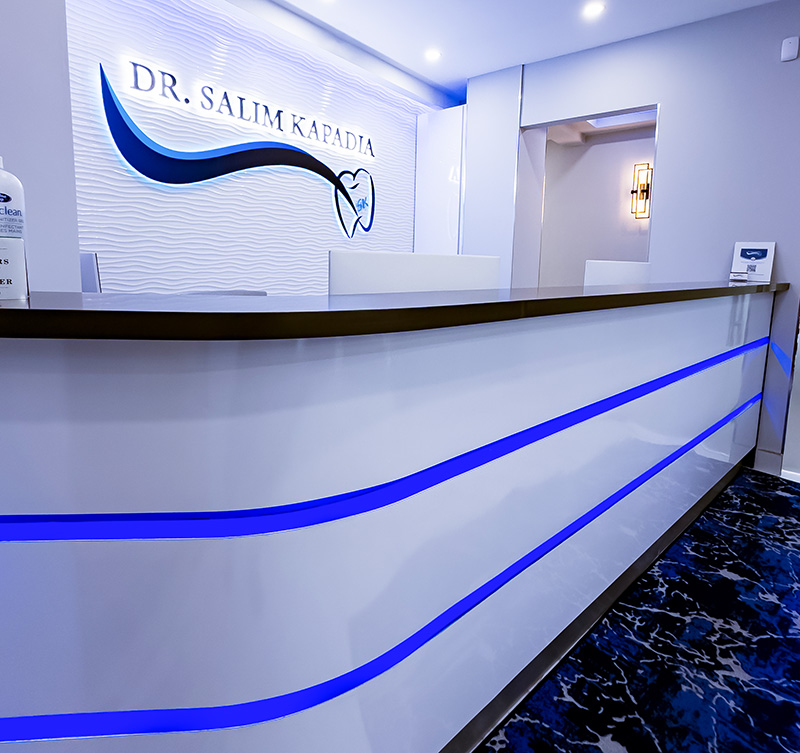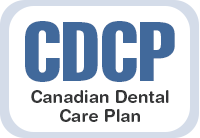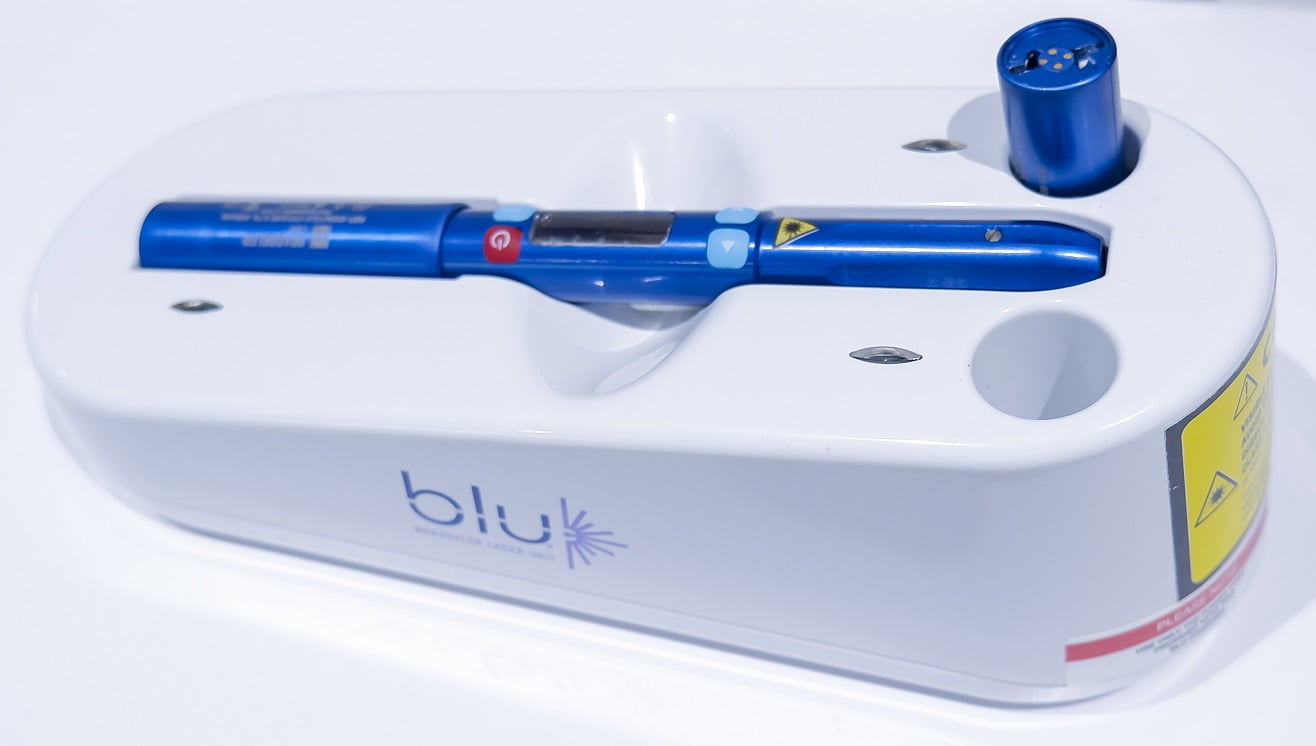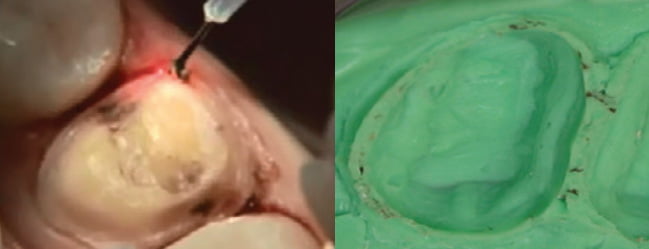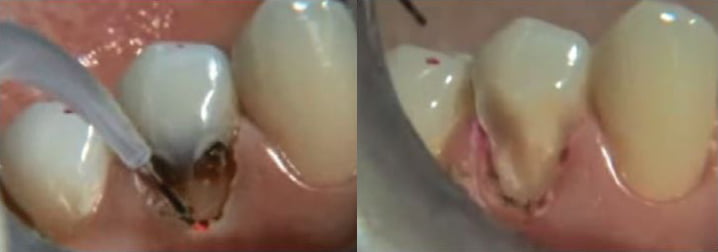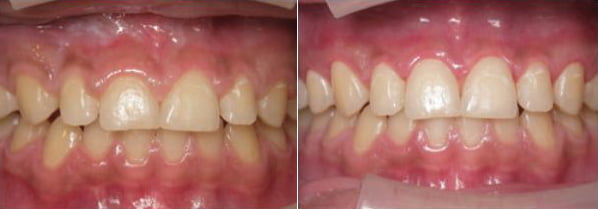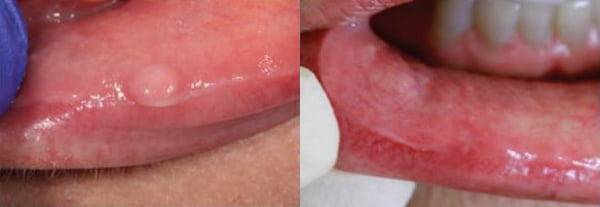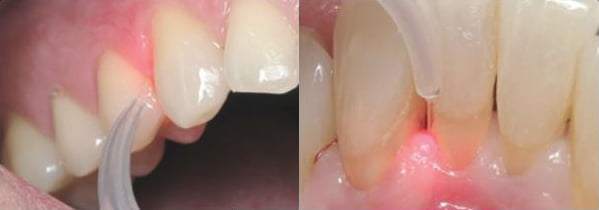Lasers have revolutionized the dental care industry
Why Laser Dentistry?
Laser technology is capable of cutting, cauterizing, coagulating, and sterilizing. It enables dental professionals to conduct more treatments in less time and offer better results than previous approaches. Additionally, their patients gain from quicker recovery times and general pain reduction.
Bye bye scalpel anxiety
Where Do We Use Laser?
General & Cosmetic Dentistry
A laser is kinder, more reliable, and often doesn’t need a local anesthetic than conventional techniques. You can conduct various soft tissue operations with little to no discomfort, no worry of gingival recession, and quick healing thanks to diode lasers’ small necrosis zones. Immediate hemostasis, in most cases, is another added benefit.
Scanning & Impressions
Crown troughing is used to get the soft tissue around the tooth’s root ready for an impression and crown. Initially, a cable was wrapped around the tooth during crown troughing to separate the soft tissue from the root. The average time required for this procedure is five minutes per tooth. In contrast, laser troughing provides a faster pace (usually 30–60 seconds) without the restrictions brought on by electrical interference. The additional benefit of diode laser crown troughing is that it eliminates microorganisms in the cavity. Crowns and bridges are sure to fit properly every time.
Hard-to-reach Cavity Restoration
Dentists use diode lasers to get clear and uncontaminated access to restore class V defects. Class V defect usually refers to a cavity in the neck of the tooth covered by the gumline. The technique employs a non-surgical approach to remove the diseased tissue at the gingival margins and provides excellent bleeding control.
Recontouring/Reshaping
Too much gum tissue can cause teeth to appear shorter than they are. When this occurs, especially around your upper front teeth, it can give you the appearance of a “gummy” smile. An uneven gum line can also make your teeth appear uneven or crooked. Diode lasers can remove the excess gingival tissue with minimal healing time. Additionally, the procedure is fast and painless.
Frenectomy
A frenectomy is a simple surgical procedure to remove a frenum from the mouth when it is too tight or short and limits movement in the mouth. These frenums have no distinct purpose, and removing them causes no loss of function. BLU Microlaser offers a bloodless and suture-free frenectomy procedure with little pain and fast recovery. A frenectomy prevents the need for future grafting by stopping the migration of gingival tissue, improving access to oral hygiene, and correcting speech impediments.
Gum Reshaping/Gingivectomy
A gingivectomy removes and reshapes loose, diseased gum tissue to eliminate pockets between the teeth and gums. Laser diode offers quick and effective hyperplastic tissue removal without using sutures or scalpels. Final impressions for restorations can be finished in the same visit, producing predictable results without causing the patient any more pain or discomfort.
Implant Recovery
Sometimes gingival enlargement can affect a patient’s dental implants and prevent the crown from staying properly on the retainer/implant. A diode laser allows quick, easy, and safe removal of excessive gingival tissue around the implant, making it more stable. Unlike other laser methods, BLU Microlaser enables the dentist to perform the procedure without sparking or heat transference to the implant, which could cause it to fail over time.
Hygiene & Preventative Dentistry
In addition to scaling and root planing, dental hygienists can use soft-tissue diode laser therapy to treat periodontal pockets. A diode laser is well absorbed by melanin, hemoglobin, and other chromophores found in periodontal disease. Scaling and root planing can also be supplemented with laser-assisted periodontal treatment (LAPT). Laser energy targets only darker, necrotic tissue while leaving good tissue alone, allowing for improved healing and results.
Bacterial Reduction & Sulcular Debridement
Dental hygienists may use a laser to remove bacteria from the periodontal pocket before performing any other procedure. Hygienists promote a healthy reattachment of the gum tissue and avoid cross-contamination in the mouth by using laser bacterial reduction procedures. A Sulcular Debridement procedure involves the removal of diseased tissue from the pockets, stopping gingival bleeding, and eliminating chronic bad breath caused by gingivitis.
Operculectomy
An Operculectomy is a minor surgical operation in which the afflicted soft tissue/gum flap around the wisdom teeth is removed, preventing future debris, plaque buildup, and consequent irritation. A diode laser easily removes redundant soft tissue distal to posterior molars. This method simplifies treating persistent pericoronitis outbreaks, deep periodontal pockets, and pseudopockets.
Finest patient care
With over 14 years of experience in Scarborough, Dr. Salim Kapadia is proud to offer comprehensive family and cosmetic dental care. Using modern dental technology, our team delivers reliable, affordable services. Dr. Kapadia thoroughly explains every procedure’s pros and cons, allowing you to make informed decisions. Our approach is simple: Inform, Consent, Perform. We’ve been awarded the “Scarborough Mirror Readers’ Choice Best Dental Office” awards in 2020 and 2021.
